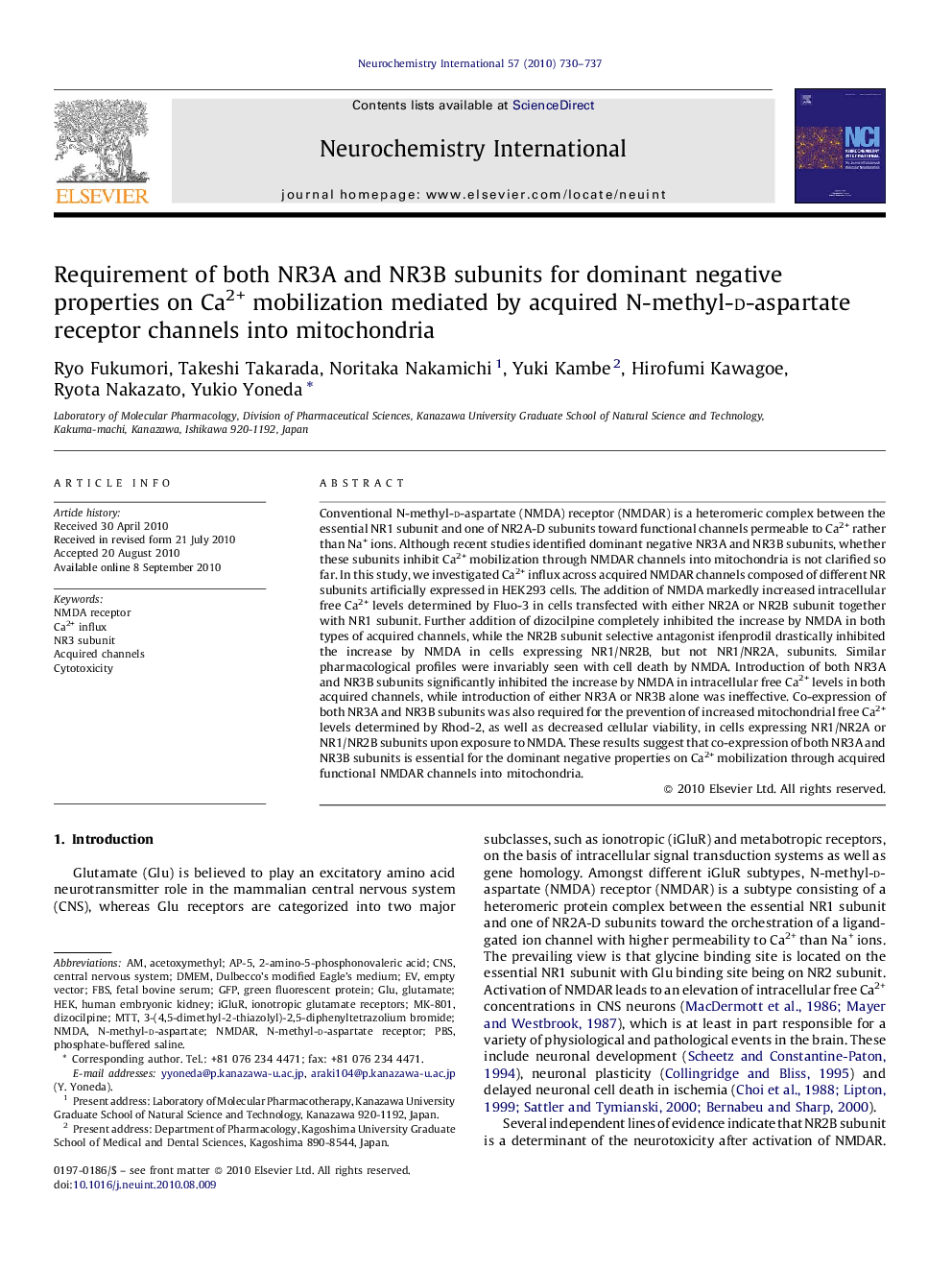| Article ID | Journal | Published Year | Pages | File Type |
|---|---|---|---|---|
| 2200981 | Neurochemistry International | 2010 | 8 Pages |
Conventional N-methyl-d-aspartate (NMDA) receptor (NMDAR) is a heteromeric complex between the essential NR1 subunit and one of NR2A-D subunits toward functional channels permeable to Ca2+ rather than Na+ ions. Although recent studies identified dominant negative NR3A and NR3B subunits, whether these subunits inhibit Ca2+ mobilization through NMDAR channels into mitochondria is not clarified so far. In this study, we investigated Ca2+ influx across acquired NMDAR channels composed of different NR subunits artificially expressed in HEK293 cells. The addition of NMDA markedly increased intracellular free Ca2+ levels determined by Fluo-3 in cells transfected with either NR2A or NR2B subunit together with NR1 subunit. Further addition of dizocilpine completely inhibited the increase by NMDA in both types of acquired channels, while the NR2B subunit selective antagonist ifenprodil drastically inhibited the increase by NMDA in cells expressing NR1/NR2B, but not NR1/NR2A, subunits. Similar pharmacological profiles were invariably seen with cell death by NMDA. Introduction of both NR3A and NR3B subunits significantly inhibited the increase by NMDA in intracellular free Ca2+ levels in both acquired channels, while introduction of either NR3A or NR3B alone was ineffective. Co-expression of both NR3A and NR3B subunits was also required for the prevention of increased mitochondrial free Ca2+ levels determined by Rhod-2, as well as decreased cellular viability, in cells expressing NR1/NR2A or NR1/NR2B subunits upon exposure to NMDA. These results suggest that co-expression of both NR3A and NR3B subunits is essential for the dominant negative properties on Ca2+ mobilization through acquired functional NMDAR channels into mitochondria.
Research highlights▶ Functional NMDAR channels are artificially orchestrated in HEK293 cells. ▶ Mitochondrial Ca2+ ions play a role in cytotoxicity mediated by acquired NMDAR. ▶ Co-expression of NR3A and NR3B subunits elicits dominant negative properties.
